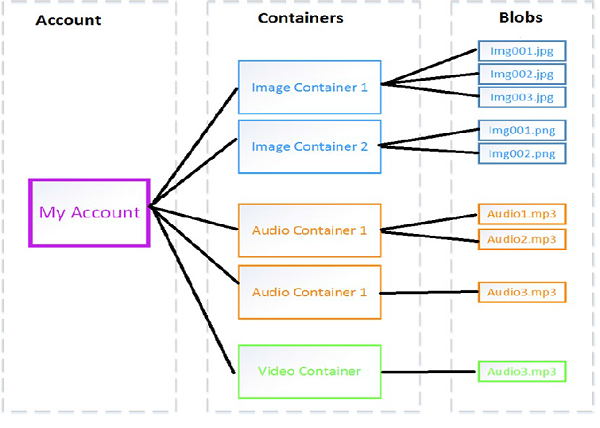
What is Blob Storage
Azure Blob storage is a service for storing large amounts of unstructured data that can be accessed from anywhere in the world via HTTP or HTTPS. A single blob can be hundreds of gigabytes in size.
An Azure storage account can contain large amounts of blob, queue, and table data. See Azure Storage Scalability and Performance Targets for details about storage account capacity.
Common uses of Blob storage include:
You can use Blob storage to expose data publicly to the world or privately for internal application storage.
The Blob service contains the following components:

Storage Account: All access to Azure Storage is done through a storage account. See Azure Storage Scalability and Performance Targets for details about storage account capacity.
Container: A container provides a grouping of a set of blobs. All blobs must be in a container. An account can contain an unlimited number of containers. A container can store an unlimited number of blobs.
Blob: A file of any type and size. There are two types of blobs that can be stored in Azure Storage: block and page blobs. Most files are block blobs. A single block blob can be up to 200 GB in size. This tutorial uses block blobs. Page blobs, another blob type, can be up to 1 TB in size, and are more efficient when ranges of bytes in a file are modified frequently. For more information about blobs, see Understanding Block Blobs and Page Blobs.
URL format: Blobs are addressable using the following URL format:
http://
Snap File Manager app stores images in a Blob service and only image URLs in the SQL database. Using the Blob service keeps the SQL database much smaller than it otherwise would be, makes it possible to scale up to an almost unlimited number of tasks, and can be done.
You can have hundreds of terabytes in a storage account, and the storage cost is much less expensive than SQL Database storage.
The Azure Storage Blob service provides a way to store files in the cloud. The Blob service has a number of advantages over storing files in a local network file system: